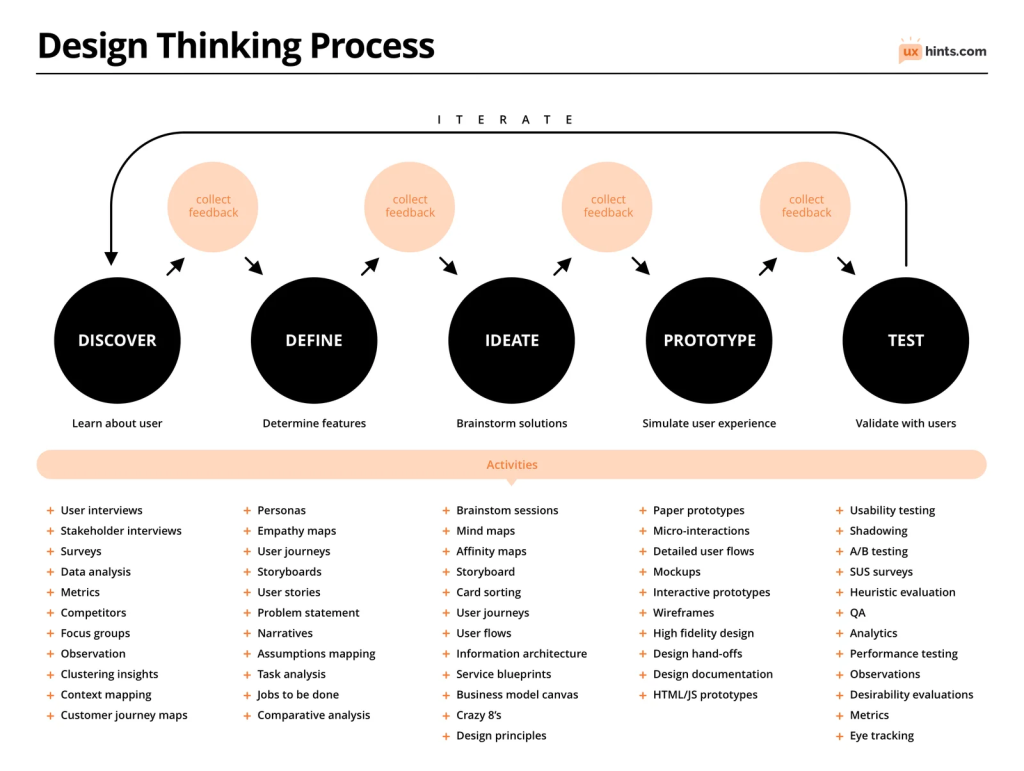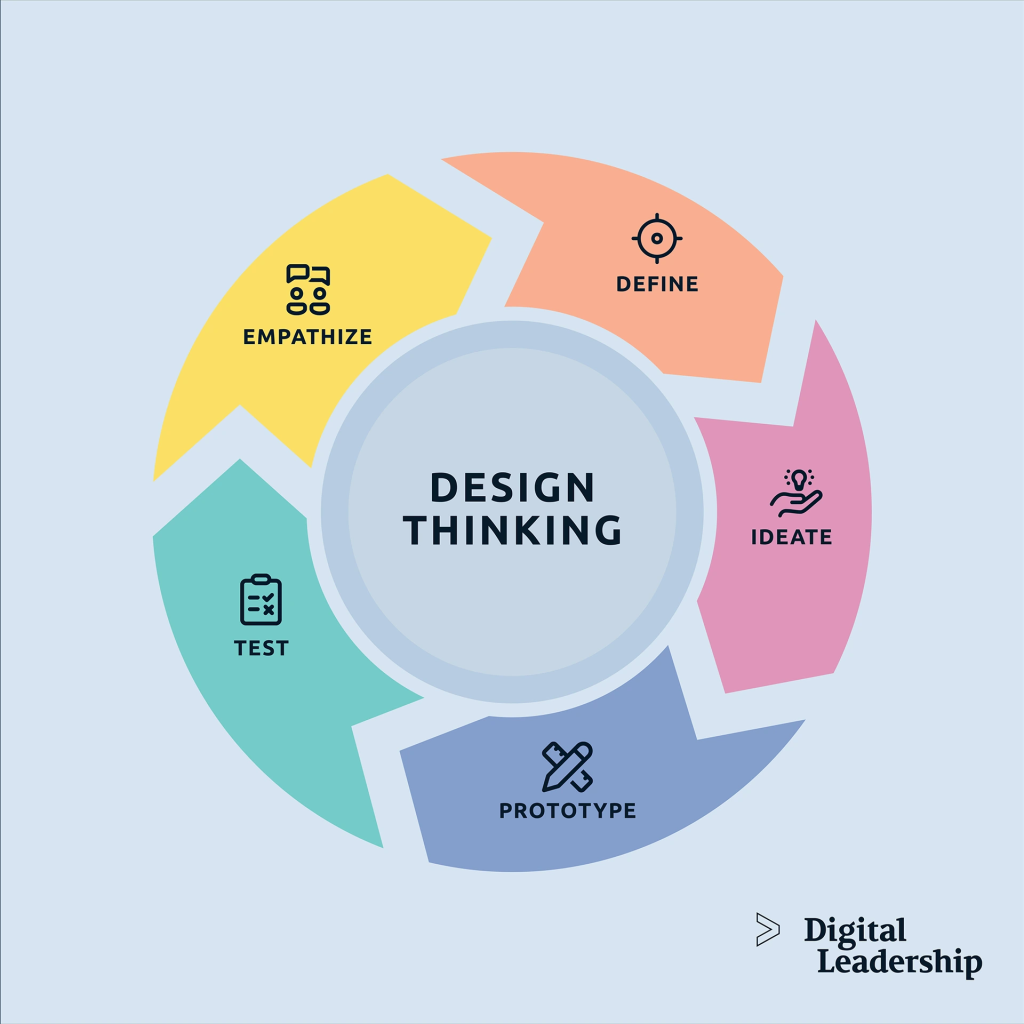Can you recall ever having used an app or site that just felt easy to use? where it seemed to know exactly what you wanted, when you needed it that is not by chance that is excellent design and excellent design is always built through a process called Design Thinking.
Although the title is Design Thinking, it is not for designers only. It is a human-based way of solving problems one based on empathy (feeling as the user). Whether you are building an app, creating a product this mindset can be helpful.
Let’s divide it into 5 simple process:
1. Empathize: Start with People
This is where we put ourselves in the users’ shoes. What do they feel? What frustrates them? for example, if you are developing a fitness application, you can conduct interviews with real users to know their taste. In this first process you have to be like a user therefore, fore sighting the issues or difficulties they may face. Also, UX research comes into play where you have interview users, conduct surveys etc. You are like a detective, but with empathy (putting the users feeling into consideration).
2. Define: Get Clear on the Problem
After gathering insights, you clarify a specific problem. Maybe you discover that users aren’t exercising because they’re stressed out by difficult exercising routines. In this Process you get to draw conclusions from the users’ perspective and point out the specific problems, so instead of jumping to conclusions on what to repair, you frame the problem from the user side.
3. Ideate: Think Big
This involves brainstorming, you deliberate on ideas such as adding “a virtual personal trainer” (This is from the fitness app from the first process). It is about keeping the door open to imagination without judgment. This Process allows for flexibility without harming or inconveniencing the users.
4. Prototype: Build to Learn
Now, you build a minimal version of your idea. Not an entire app, just enough to check it out maybe a rough prototype. Concept it as a draft not making it complicated.
5. Test: Learn from Feedback
You show it to real users. What does it do well? What does it not do well? What could be made better? Feedback lets you iterate (repeat) not just on the design, but on what you know about the problem.
It is not about being correct, it is about getting it correct.
Why Design Thinking Process Matters in UI/UX
Design Thinking reminds us to stay focused on actual human needs, not guesses. It allows us to build experiences that are effortless, intuitive, and above all useful. If you are a designer, developer, entrepreneur etc. This methodology encourages you to design with passion as well as considering the users.



